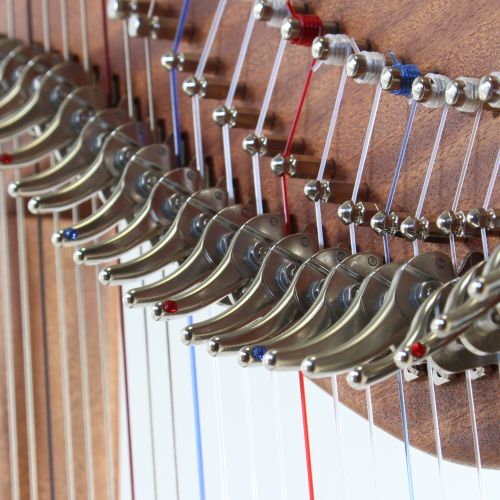
The harps that are usually played today are diatonic instruments:
in one octave they have 7 strings.
Tuned in in C-major that would be C-D-E-F-G-A-B (= the white keys of the piano).
if you wanted to play another note (the black keys on the piano) you would have to change the string length.


For a beginner a lever harp is a good startig point: the playing technique for the fingers is the same on all harp types
(the string tension will vary, it is ususally higher on a Concert harp), so everthing you learn is useful if one day you decide to dive deeper in classical music and want to change to the pedal harp
In our harp exhibition you can see, hear and play all types of harps ..
So the best way to get more information is to plan a visit to Glissando - we will take the time needed to show everthing and discuss your indivudual needs and plans.